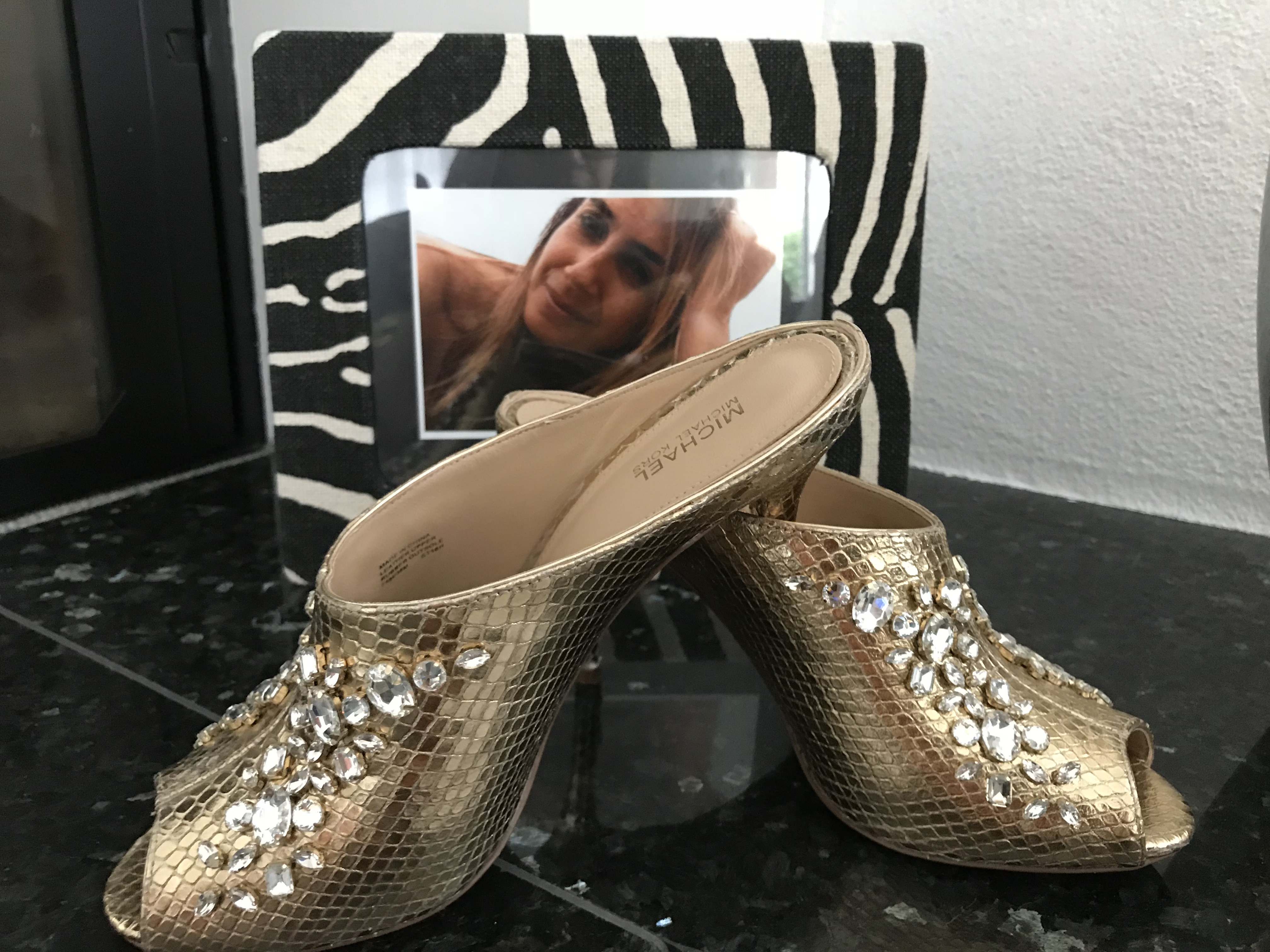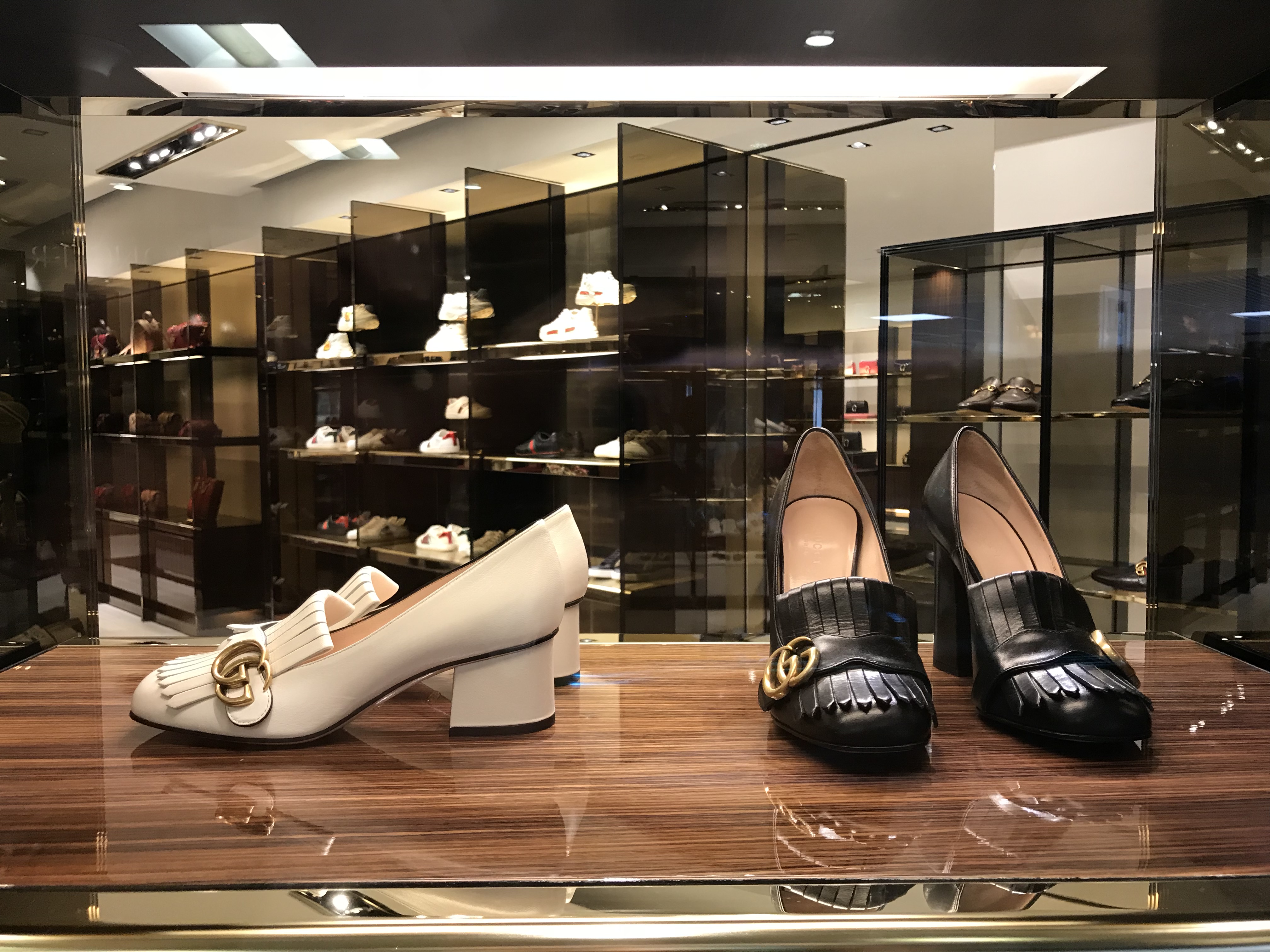Sculptural shoes conjure up towering heels, high platforms and extraordinary creativity – concepts for the feet as designed in leather and metal by Japanese masters Noritaka Tatehana and Kei Kagami, or Alexander McQueen’s iconic 30cm-high Armadillo designs from his final 2010 collection, or even the styles by the late Zaha Hadid for United Nude, layered in strata like some of her furniture.
Given that they were constructed for visual impact rather than the practicalities of standing and walking, the sculptural heel has proved a blind alley – until now. This is due in part to new materials and technologies, but also to changes in attitudes as women seek to unshackle themselves from uncomfortably high heels. Flats began to appear on the catwalk and now, for a little height, the light sculptural heel. The trend goes back to Salvatore Ferragamo, whose 1940s F wedge and columnar Flower heel have inspired the house’s current creative director Paul Andrew.
“There is a clear trend towards a simple, cool modernity that is expressed in geometric and sculptural shapes,” says Susanne Botschen, co-founder of new online footwear retailer Martha Louisa. “The high stiletto is lovely for a special evening, but an interestingly shaped mid-heel shoe can give a practical focal point to an outfit at any time of day.”
Words such as “elegant” and “light” drop from designers’ lips to describe heels straight out of geometry textbooks and curved uppers that frame the foot. “I’ve been creating sculptural shapes since I was born, but they always have to be light and subtle,” says Manolo Blahnik. “This autumn I’m inspired by baroque sculpture in Italian churches and by midcentury modernism, but it’s just a touch or it looks heavy.” He also points to customers driving this change. “Heels are definitely lower,” says Blahnik. “Sculptural shapes look less overdone. At my recent exhibition launch in Canada, most guests were wearing 3-5cm heels.”
Plexiglas is fertile ground for other designers; it can, for example, be faceted like crystals or cut glass in “whisky tumbler” form, as seen on the sequinned Treasure Stardust Sequin Fantasy shoes. “All shoe design is sculptural to some degree. Whether it’s moulding a Lucite heel into cut‑glass form or making an upper flow around the foot, the contrast between the two is exciting,” says Sanderson. “Sculpture is not functional, it’s art, but a shoe must be practical. Getting it right is a balancing act.”
Giuseppe Zanotti, a long-term bold shape shifter, puts ice-inspired facets on his Ghiaccio boot (£730) and turns metal elemental with his lightning-shape G heel (£530). “Sculpture offers endless inspiration,” he explains. “The lightning is a sculptural adaptation of my G signature to look more powerful than a traditional stiletto or kitten heel, while the facets heel is a luxurious contrast to a simple, modern, tactile nappa upper.”
Christian Louboutin is another designer having a ball with sculptural shapes. His new collection includes futuristic column-heeled boots with scalloped soles), Plexiglas block-heeled pumps and designs with details based on 1960s sculpture) and patterns. “A shoe is a ‘little architecture’, a subtle matter of proportion,” explains Louboutin. “I found myself looking at 1960s and ’70s interior design and the ‘futuristic cells’ conjured up by Jacques Grange, Michel Boyer and Gabriella Crespi. I was also inspired by 2001: A Space Odyssey and interior designer David Hicks’ geometric shapes.”
At Jimmy Choo, creative director Sandra Choi is similarly inspired by renowned artistic endeavour. “I love the clean lines of Brancusi’s work and try to channel metal and stone into delicate, elegant shapes that are balanced and practical,” she says. “Our prototype last is made to my foot, so I can test everything. I’m loving voluptuous, curved shapes like our Samantha mule (£1,195), which is textured with rounded pearls that complement the curved sides and toe cleavage. While Edwardian-inspired, it looks very modern.” Choo’s Tanya boot (£1,050) elongates the leg with a sinuous curve of subtly coloured Swarovski crystal that segues upwards into a matching cockade – the lightest possible version of sculpture.
There is perhaps one more reason for the rising popularity of low, sculptural heels. As Hardy eloquently puts it, current fashion has a “decorative abundance” and we have maybe reached peak pattern and need a palate cleanser. Designers whose shoes are adjuncts to a complete fashion collection, such as Jacquemus or Pyo, are disciples of form, drape and simplicity rather than print and embellishment. As Buanne says: “Our intuition tells us that the shoes shouldn’t speak louder than the wearer.” This look is hard to perfect, but these sculptural shoes, which can alter the whole tenor of an outfit, are a good place to start.
LuxUpYourFeets!!!
















